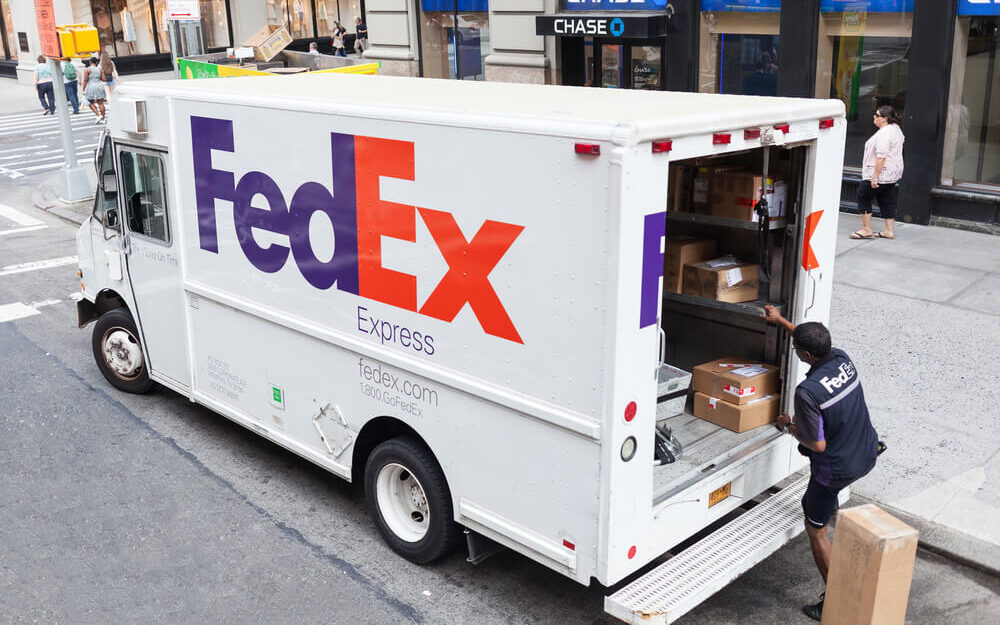FedEx Corporation (NYSE: FDX) is known for getting packages to your doorstep using a network of aircraft and trucks around the world.
But its portfolio also includes a variety of global e-commerce and business services.
Despite all of the previous information, FDX earns a “Bearish” 30 in our proprietary Stock Power Ratings system.
Let’s dig deeper.
FDX’s Background
Federal Express started as school assignment for founding president Fredrick W. Smith in the 1960s.
While attending Yale, Smith wrote a term paper discussing an idea for a revolutionary way to accommodate time-sensitive shipments.
Six years later, Smith developed a delivery service that integrated a system of airplanes and trucks to perform timely deliveries.
Federal Express lost almost $30 million in its first 26 months of operation due to rising fuel costs. But with money won from blackjack, Smith kept his business afloat until turning a profit in 1976.
By 1984, Smith took his company global.
FDX’s Stock Power Ratings Breakdown
Let’s see why FDX scores a “Bearish” 30 out of 100 within Stock Power Ratings.
First we’ll take a quick look at its ratings breakdown to examine how it competes against its industry.
Then we will zoom in on the momentum and volatility factors to check out the stock’s performance.
Let’s get started.
FDX’s Stock Power Ratings in September 2022.
- Size — With a market cap of $37.2 billion, FDX is a large company — earning it a 2 on our size metric. Our research shows that larger companies tend to lag in returns compared to smaller companies with similar ratings on our other factors.
- Growth — FedEx has a one-year annual sales growth rate of 11.6%, but an earnings-per-share growth rate of negative 26.3%. These contrasting rates give FDX a 43 on growth.
- Quality — FDX has returns on assets, equity and investment that are all higher than the averages of its peers. It also has a gross margin of 25.6% compared to the industry average of 18%. FedEx earns a 70 on our quality metric.
- Value — Out of all six factors, FDX scores the highest on value — scoring a 79. Its price-to-sales ratio is seven times lower than the delivery and logistics industry average.
Now let’s zoom in on momentum to see how it has performed against industry peers.
Then we’ll touch on volatility to understand why recent remarks from the company led to a drop for FDX.
FDX’s Momentum + Volatility
Source: TradingView.
FedEx has had quite the roller coaster of a year regarding momentum.
Over the last 12 months, FDX stock is down more than 36%. Its delivery and logistics industry peers are only averaging a 15.4% loss over the same time.
This earned FDX a “Bearish” 32 on momentum.
FDX‘s share price fell 21% in one day earlier in September.
That fall came after a quarterly report showed it was $500 million short of its revenue target.
Executives expect conditions to weaken even further in the current quarter due to global economic troubles.
This sharp drop in share prices compared to the industry average explains why its volatility rates a 24.
The Bottom Line
FedEx scores a “Bearish” 30 out of 100 on our Stock Power Ratings system. This means we expect it to underperform the market over the next 12 months.
However, “Strong Bullish” stocks are no anomaly.
We expect those stocks to beat the broader market by 3X in the next 12 months!
To get one top-rated stock within our Stock Power Ratings system, check out Matt Clark’s Stock Power Daily.
Monday through Friday, he gives you one stock that scores 80 or above on our system and tells you why you should or shouldn’t add it to your portfolio — for free!
Want Even More? Try Green Zone Fortunes
Before looking deeper in to FedEx, there’s something you should consider.
Our team has identified mega trends in the market and ways you can capitalize on these trends for profits in your portfolio.
With our top-notch investing service, Green Zone Fortunes, you get access to the best of the best stocks in the market based on these mega trends.
